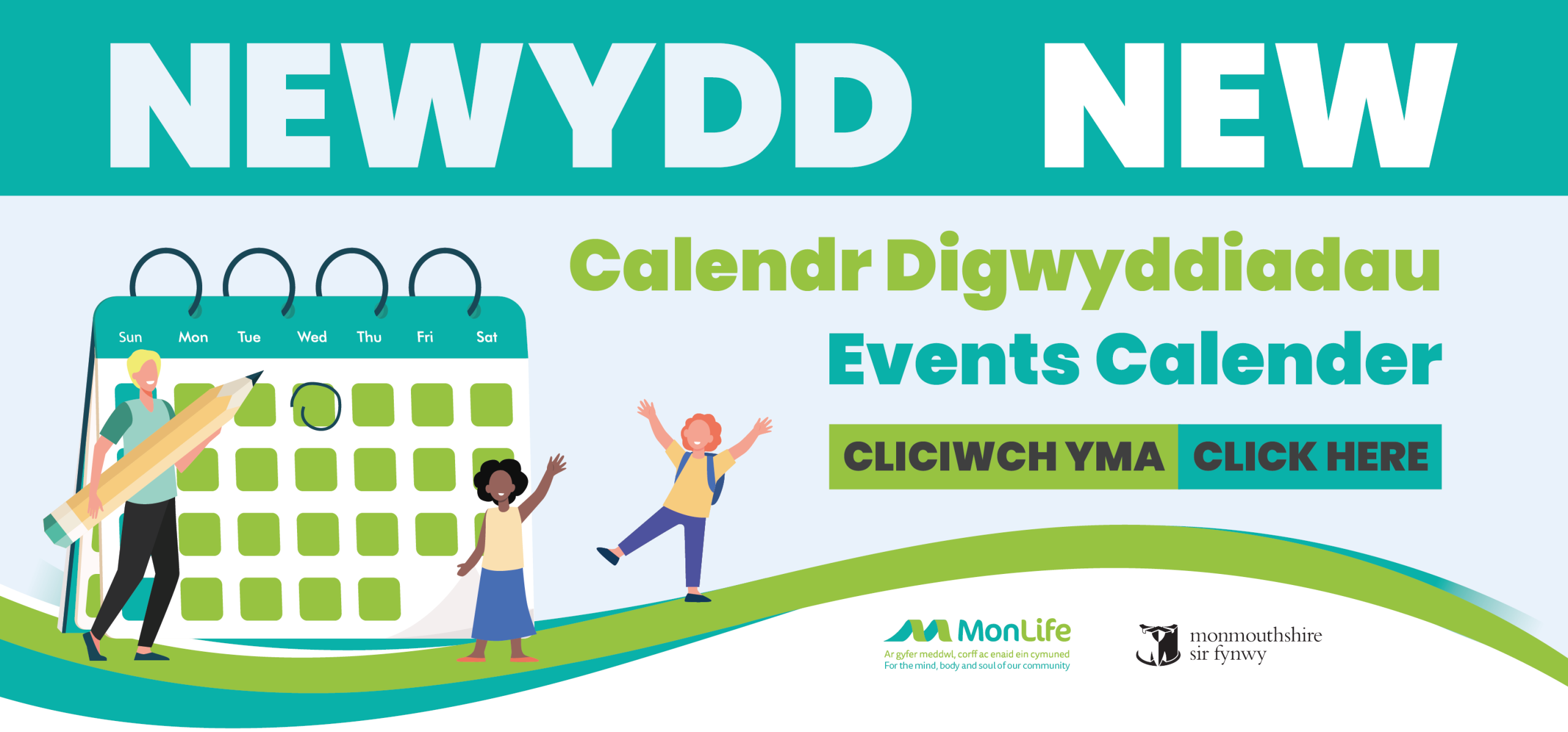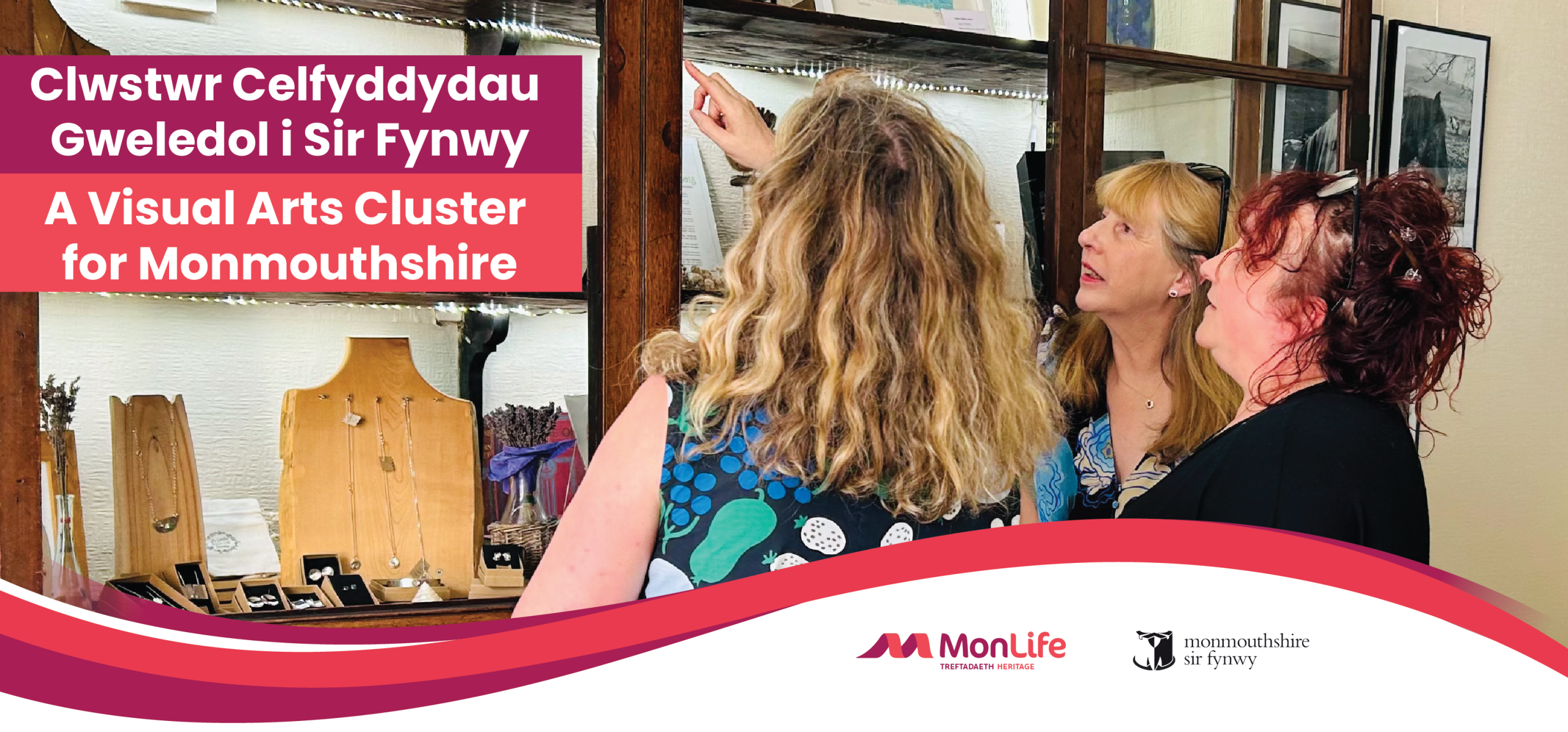Abergavenny Museum & Castle
Abergavenny Museum houses a wonderful collection of artefacts, permanent displays and temporary exhibitions, detailing the history of the town and wider area.
The museum, which was founded on 2nd July 1959, is located in a Regency building, built on top of a Norman motte within the grounds of Abergavenny Castle.
Today, the combination of a wonderful museum and picturesque castle represents a fantastic attraction for those looking to learn more about the area, explore the castle grounds, or find a great spot for a picnic.
The museum’s displays tell the story of this historic market town from prehistory through to the present day. The displays are on several levels, with some help most areas are accessible to wheelchair users. Please click on the links below for more information.
The History of the Castle and Museum
It is widely believed that the motte at Abergavenny Castle was built by the Norman Lord Hamelin de Ballon in 1087 AD. The original tower, built at the top of the motte, would have been a wooden construction, and beneath the motte was the bailey, which is a courtyard containing the outbuildings and stables.
The first Great Hall in the castle was probably a timber building. Within this Hall, on Christmas Day 1175, the Norman Lord of Abergavenny, William de Braose, murdered his long-standing Welsh rival Seisyll ap Dyfnwal.
In 1182, the castle was attacked by relatives of the murdered Welshmen. Most of William’s men were captured, but he was not at home.
The castle was destroyed in 1233 by Richard Marshal, Earl of Pembroke and the Welsh Princes, after which, the keep was rebuilt in stone.
The walls you see today are the remains of a stone Hall built between 1233 and 1295.
The tower complex consisted of two towers, one polygonal and the other circular. Evidence suggests that these towers were built in 1295-1314 at the same time as the town walls, using murage grants – a form of tax raised by the local Lord.
The gatehouse is a typical barbican gatehouse. When the castle wall was first built, in the late 13th to early 14th century, the gate was a simple opening in the curtain wall.
Unusual door features suggest that the gatehouse was added early in the 15th Century. At this time the last Welsh war of independence was being fought against Owain Glyn Dwr.
The keep along with most of the other castle buildings, was destroyed in the Civil War, between 1645 – 1646. In 1819, the present building – now the Museum – was constructed on top of the motte for the Marquess of Abergavenny.
The history of Abergavenny Museum
The Museum was founded on 2nd July 1959. The idea for a museum dates back to as early as 1903, when it was discussed by the Abergavenny Free Library Committee. At this meeting, permission was given for the library to begin collecting objects.
These collections remained at the library until the 1940s when it was said that they were disposed of. The demolition of the historic buildings in Tudor Street and Castle Street during the 1950s once again made people aware of the need for a museum. Alfred Jackson addressed the Rotary Club on 22nd October 1957 and a committee was formed.
Visitor Information
Abergavenny Castle and Museum staff are happy to assist with any of your queries and can be contacted by post, telephone or email.
Abergavenny Museum and Castle
Castle Street
Abergavenny
Monmouthshire
NP7 5EE
Telephone: 01873 854 282
Email: abergavennymuseum@monmouthshire.gov.uk
Cost: Free admission for all (charges apply at some special events).
Opening Times
Monday – CLOSED
Tuesday – 11.00 am – 4:00 pm
Wednesday – CLOSED
Thursday – 11.00 am – 4:00 pm
Friday – 11.00 am – 4:00 pm
Saturday – 11.00 am – 4:00 pm
Sunday – 11.00 am – 4:00 pm
Transport Information
Unfortunately, coaches are unable to access the grounds. Alternative parking is available at Castle Street Car Park or the bus station.
Access Information
As with many historic buildings, it is difficult to access some areas. It is recommended that at least one able bodied person is available to assist. The grounds of the castle are uneven, but there is a ramp leading up to the museum, it is however quite steep. Once at the front door it is possible to access the Keep gallery where our changing exhibitions are held. Museum staff can assist with opening doors. Other areas of the museum are accessible to varying degrees via outer doors. A museum custodian will need to help so please be patient if the museum is busy. Guide dogs are very welcome. We are working towards providing alternative means of seeing the collections for those visitors who are unable to get to them physically. Please contact us if you would like to discuss access further.
Permanent Displays
Abergavenny Museum hosts regular exhibitions alongside the five permanent display galleries:
The Keep Gallery
In the ‘Keep Gallery’ are displays relating to the history of the area. They include, prehistoric tools, Roman armour, a seventeenth century baby rattle, artefacts relating to Victorian personalities Father Ignatius and Lady Llanover and the infamous Whiskey the turnspit dog.
Air Raid Shelter
In the basement of the museum, we have a reconstruction of a World War II air raid shelter.
Until 2008, the shelter itself has been serving as a tool shed in the back garden of an Abergavenny resident. Now it can be seen in the museum, complete with siren sound effects.
The Saddler’s Shop
In the mid-nineteenth century, Abergavenny was home to eight saddlers shops. At the museum, we have a display of how a typical one would have looked.
The Welsh Kitchen
The Welsh Kitchen dates from 1960. It was one of the earliest displays and is still as popular as ever.
It is in the style of a Victorian farmhouse kitchen and incorporates a fireplace, which was rescued from the Tudor Street demolitions. The display was updated in 2014 by pupils from a local primary school who helped to redesign the space and devised a variety of hands on activities for you to try.
Basil Jones’ Grocery Shop
Our best-loved display is the ‘Basil Jones Shop’. In 1994, the museum acquired a large amount of stock from a well-known local grocer – Basil Jones.
This included packaging from as early as the 1930’s. Our conservators had to remove some of the original stock such as biscuits to ensure that we did not create a ‘pest problem’! The shop was then recreated within the museum. Often our visitors can remember the original shop and we have a ‘memory book’ where they can record their thoughts.
Schools and Education
Abergavenny Museum and Castle is an ideal venue for an educational visit. We welcome schools who wish to bring pupils for a general visit to look at the castle and/or the museum displays. Entry is free. We do ask that you let us know when you are intending to visit, so we can let you know of any events that may affect your visit.
We are mindful of the pressures on the school budget and for this reason, we have put together ‘Castle Discoverers’, a self-led workshop for schools, which focuses on the history of the Castle through outdoor learning.
We also run a successful programme of formal pre-booked school workshops, which are well attended by schools from the surrounding area and further afield. All of the sessions have been designed with the curriculum in mind to allow the children to find out more about a particular subject area, whilst experiencing the unique environment of Abergavenny Museum and Castle. There is a charge for these workshops.
Local Attractions
There are many things to see and do in Abergavenny and the surrounding area, including:
St Mary’s Priory Church
The Church is one of the largest and finest Parish Churches in Wales. It was, in historic times, referred to as being “The Westminster Abbey of Wales” and houses a most significant collection of medieval monuments and artefacts.
The Borough Theatre
The Borough Theatre is a warm, intimate and yet modern 338 seat venue situated in the centre of the picturesque border town of Abergavenny, the traditional Gateway To Wales.
Abergavenny Market
Abergavenny is famous as a market town, with the Tuesday Retail Market being most well-known. The market also offers regular Flea Markets, Craft Fairs, Farmers’ Markets and Antiques & Collectors Fairs. Linda Vista Gardens, Bailey Park, and Castle Meadows are also three wonderful open spaces within the town.
Llanthony Abbey
Among the Black Mountains on the Welsh/English border lies the almost secluded valley of Llanthony. The Priory dates from the twelfth century and was inhabited by an Augustinian community.
Capel Y Ffin
Close to Llanthony is the monastery built by Rev. Joseph Leycester Lyne, known as Father Ignatius, who attempted to start monastic life in the Church of England. Later it was the home of Eric Gill, famous sculptor and typographer.
For further tourist information, please visit www.visitmonmouthshire.com
Opening Hours
Monday – CLOSED
Tuesday – 11am – 4pm
Wednesday – CLOSED
Thursday – 11am – 4pm
Friday – 11am – 4pm
Saturday – 11am – 4pm
Sunday – 11am – 4pm
Facilities
FREE ENTRY
Nearby Parking: Castle Street Car Park, Abergavenny, NP7 5EE.
WiFI
Refreshments
This post is also available in: Welsh










